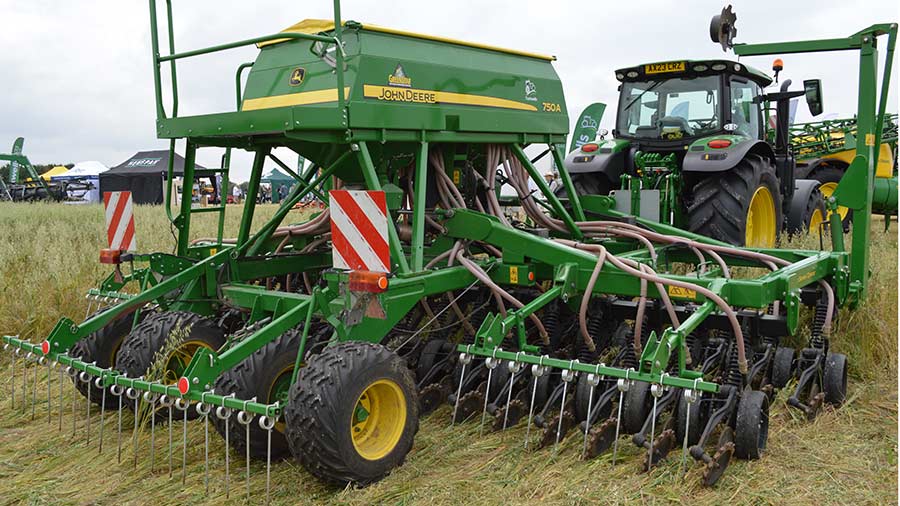Oats come out top in heavy land direct drilling trial
 © MAG/David Jones
© MAG/David Jones Oats gave a higher yield and profit margin when direct drilled compared with minimum tillage in an eight-year trial, due largely to the cereal crop showing a very vigorous growth habit which helped it compete well with weeds.
Wheat and barley showed slightly lower yields and margins when direct drilled reflecting lower plant establishment and weed problems in a trial conducted by crop consultant Niab on heavy land in Cambridgeshire.
“Oats – either spring or winter – are very vigorous and are better suited to direct drilling as they compete well with weeds,” Nathan Morris, soils specialist at the consultant Niab, told Farmers Weekly at the Groundswell 2023 event in Hertfordshire.
See also: Direct-drilling: Main findings from major five-year trial
Farmer-led trial
The trial was farmer-led across four fields, with limited scope to change management, and Nathan adds that wheat and barley would probably have performed better with higher seed rates, earlier drilling and more use of herbicides.
The trial on heavy clay land at Dry Drayton compared three methods – the farm’s standard non-inversion minimum tillage, direct drilling and managed direct drilling – where other actions such as subsoiling or the use of a straw rake could be used.
There was no fixed rotation on the farm, with first cereals, second cereals, break crops (including oats) and spring barley compared. All straw from previous crops was chopped.
The heavy clay soils were difficult to manage and had blackgrass concerns as well as wild oats and some brome, and all were sprayed off with glyphosate pre-drilling and then had a pre-emergence herbicide, said Niab’s weed special Will Smith.
“No-till came under pressure from grassweeds, such as blackgrass, and from invasion by other grassweeds,” said Will.
Although direct drilling can lead to poorer plant establishment, additional techniques such as controlled traffic to cut soil compaction, better weed control and more spring cropping in the rotation could have improved the direct drilling results, he added.
Direct drilling advantages
Over the eight years and across four fields, direct drilling showed advantages in increasing soil strength and decreasing soil bulk density in surface soil, but there was no discernible changes in soil organic matter and soil biology.
In the trial, a first cereal crop using the farm’s standard non-inversion minimum tillage cultivation method gave an eight-year average yield of 9.27t/ha compared with direct drilling at 8.70t/ha and managed direct drilling at 8.78t/ha.
Under oats the farm standard cultivation yielded 5.70t/ha and was beaten by direct drilling at 5.77t/ha and managed direct drilling at 5.76t/ha.
The profit margin, taking into account input and cultivation costs, saw first cereals make a margin over eight years of £4,488/ha, direct drilling £4,353/ha and managed direct drilling £4,297/ha.
For oats, the farm standard of £2,533/ha was topped by direct drilling at £3,163/ha and managed direct drilling at £2,993/ha.

